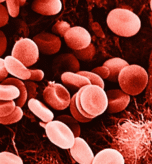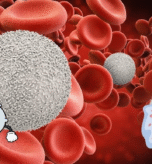5575166815899229 AIRTEL AIRTIME
Artificial fragrances are synthetic chemicals designed to mimic natural scents, used in a wide range of products, from perfumes and cosmetics to cleaning supplies and air fresheners. These man-made fragrances can contain hundreds of untested chemicals, often undisclosed to consumers due to trade secret laws. While they may make products more appealing, artificial fragrances have been linked to various health and environmental concerns.
What are Artificial Fragrances?
Artificial fragrances are chemical mixtures created in laboratories to replicate specific scents. They can be used to fragrance products, mask unpleasant odors, or enhance the sensory experience of a product. These fragrances are often composed of multiple chemicals, including:
- Synthetic musks: Used to create long-lasting scents, synthetic musks have been linked to hormone disruption and bioaccumulation in the environment.
- Phthalates: These chemicals are used to make fragrances more durable and have been associated with reproductive issues, birth defects, and cancer.
- Volatile organic compounds (VOCs): VOCs can evaporate quickly, releasing chemicals into the air, contributing to indoor air pollution and potential health problems.
The Health Risks of Artificial Fragrances
Exposure to artificial fragrances has been linked to various health issues, including:
- Skin irritation and allergic reactions: Artificial fragrances can cause skin irritation, allergic contact dermatitis, and other skin problems.
- Respiratory issues: Inhaling fragrance chemicals can trigger asthma, allergic reactions, and other respiratory problems.
- Hormone disruption: Some artificial fragrances contain endocrine-disrupting chemicals (EDCs), which can interfere with hormone function, leading to reproductive issues and other health problems.
- Cancer concerns: Some studies have suggested a link between certain artificial fragrances and cancer, although more research is needed to confirm these findings.
Environmental Impact
Artificial fragrances can also harm the environment:
- Water pollution: When washed down drains, fragrance chemicals can contaminate waterways, harming aquatic life and potentially entering the food chain.
- Air pollution: VOCs in artificial fragrances can contribute to indoor and outdoor air pollution, negatively impacting both human health and the environment.
- Bioaccumulation: Some fragrance chemicals can accumulate in the environment and in living organisms, potentially causing long-term harm.
Alternatives to Artificial Fragrances
Consumers can reduce their exposure to artificial fragrances by:
- Choosing fragrance-free products: Opting for fragrance-free or naturally fragranced products can minimize exposure to synthetic chemicals.
- Using essential oils: Essential oils can provide natural fragrance options, although some people may still experience skin irritation or allergic reactions.
- Reading labels carefully: Looking for products with transparent ingredient lists and avoiding those with vague terms like “fragrance” or “parfum” can help consumers make informed choices.
Conclusion
Artificial fragrances may make products more appealing, but the potential health and environmental risks associated with these chemicals cannot be ignored. By understanding the composition and potential impacts of artificial fragrances, consumers can make informed choices about the products they use and reduce their exposure to these synthetic chemicals. As awareness grows, manufacturers may be encouraged to develop safer, more sustainable fragrance options.



